Low levels of hydraulic fluid can cause harm as well as poor efficiency. How about overfilled hydraulic fluid? If you wonder about this then you are in the right place. We’ve researched this matter to help you and here’s what we discovered.
Overfilling the hydraulic fluid might could damage your vehicle as it may result in the following:
- Messy leakage
- Smoke or fire
- Wear of engine parts
In this article, we'll go over the effects of overfilled hydraulic fluid. We'll also discuss possible responses to the situation and the qualities of the hydraulic fluid. So keep on reading.
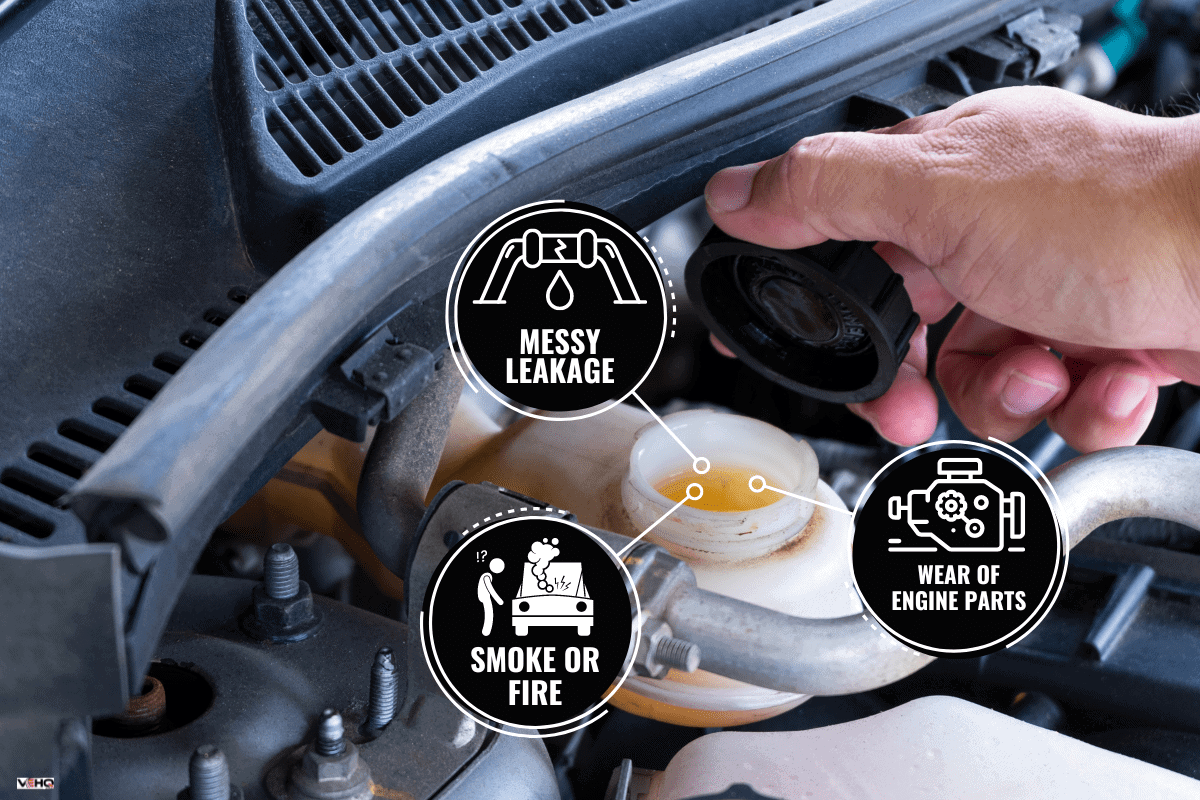
Can You Overfill Hydraulic Fluid?
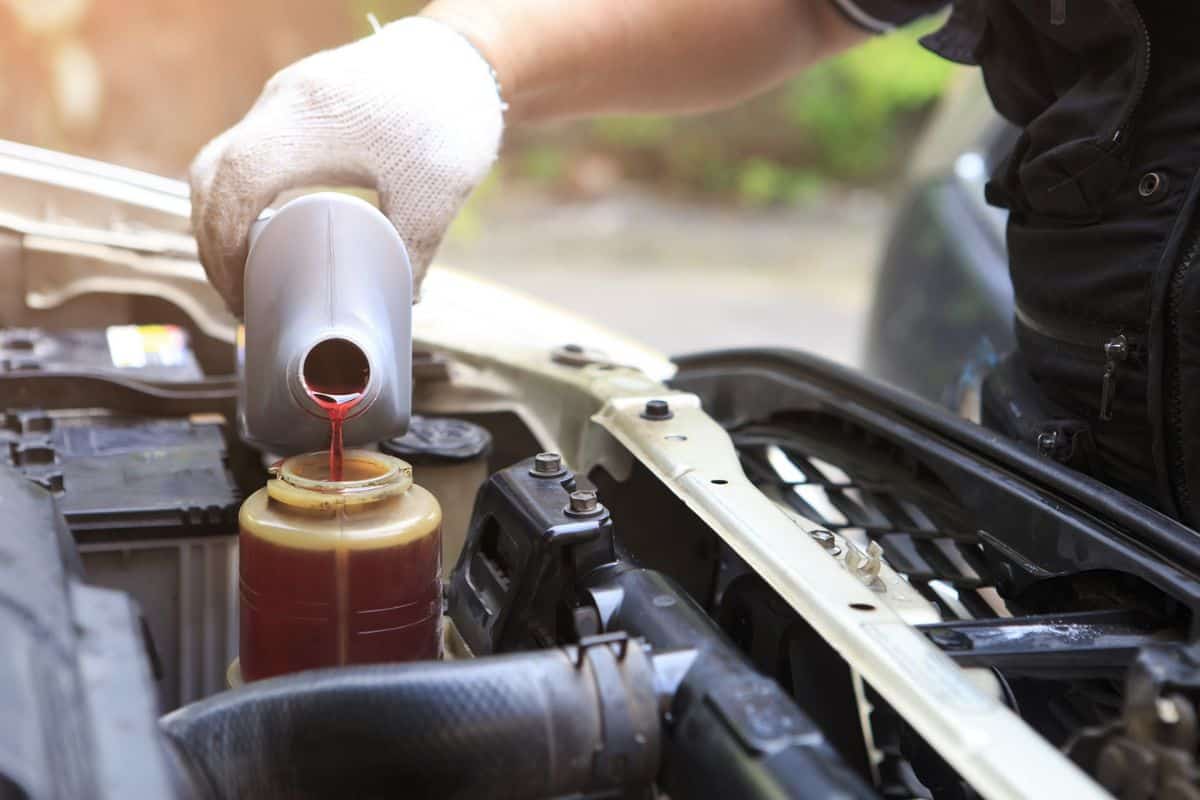
Many modern classic cars include hydraulic power steering systems that use pressurized fluid (hydraulic fluid) to make the wheel easy to turn and the handling easy at any speed. Some more recent models now use electronic steering.
For this post, we’ll focus on the steering system that utilizes hydraulic fluid to create a hydraulic connection between the steering wheel and the front wheels.
The moving components of the steering system are lubricated by the hydraulic fluid. It keeps vehicles operating at their best by reducing foam and preventing corrosion in the steering pump and power steering gear. When hydraulic fluid is overfilled, these are the possible results:
Messy Leakage
When you originally put too much hydraulic fluid in, you generally won't have many issues because the surplus fluid will sit in the reservoir. However, when a car becomes hotter, the fluid also gets hot and expands.
As it expands, the hydraulic fluid can drip onto the car's engine and make a mess in the engine area. This can be a huge problem.
A clogged engine compartment can develop from faulty hydraulic fluid that leaks right away. Sometimes foaming occurs, which causes elements of the car to wear out too soon.
Smoke Or Fire
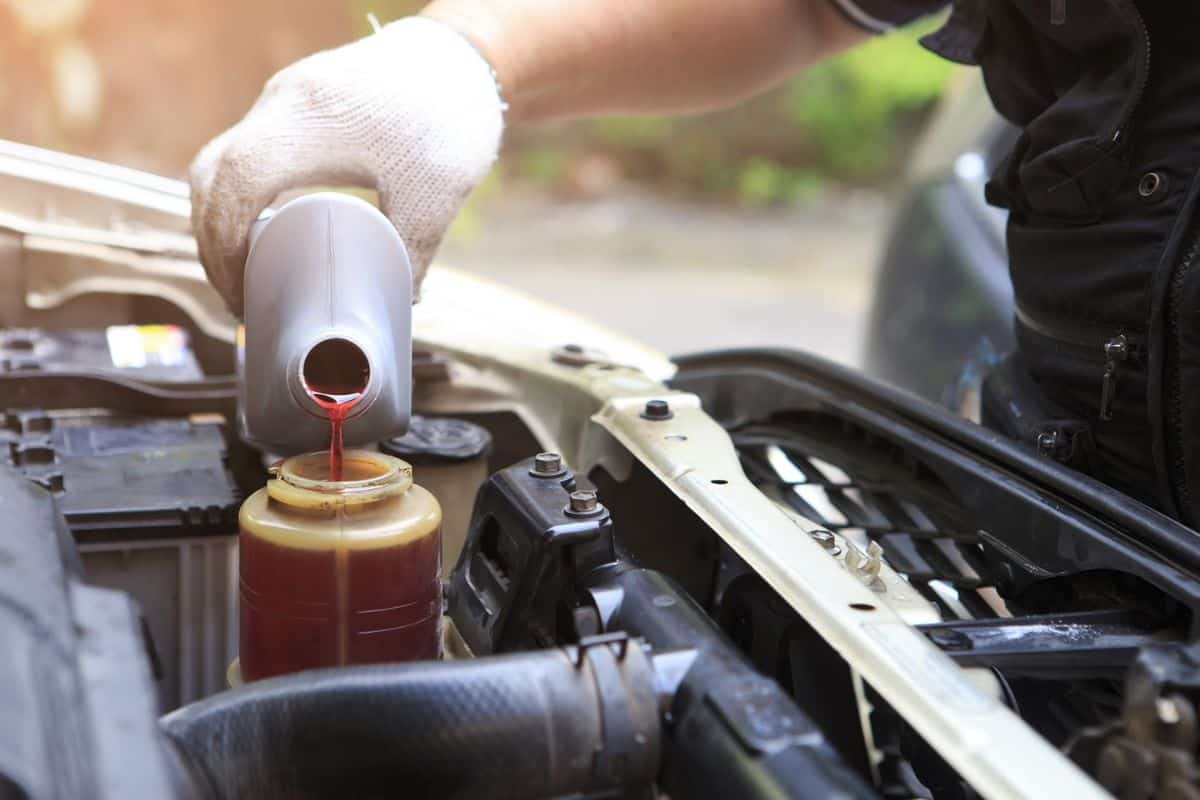
Hydraulic fluid is ignitable if heated sufficiently. The flash fire point of this substance is about 400 degrees Fahrenheit (°F). When an engine reaches that temperature, the fluid it contains is more prone to catch fire.
Smoke will billow from the engine compartment if you overfill the fluid and it spills on the hot engine components like the exhaust pipe or manifold. The machine will catch fire if the problem is not remedied quickly. However, that usually requires a big spill.
Wear Of Engine Parts
You must fill the power steering system with hydraulic fluid in accordance with the mark on the reservoir or dipstick. Foam or air bubbles inside the pipelines may result from using too much fluid. In turn, this will make turning difficult and limit the effectiveness of your steering.
Other components of the engine compartment, such as batteries and belts, will be impacted by the leaking of hydraulic fluid into the engine compartment, reducing their functionality and hastening their wear-out.
What To Do If You’ve Overfilled Your Hydraulic Fluid
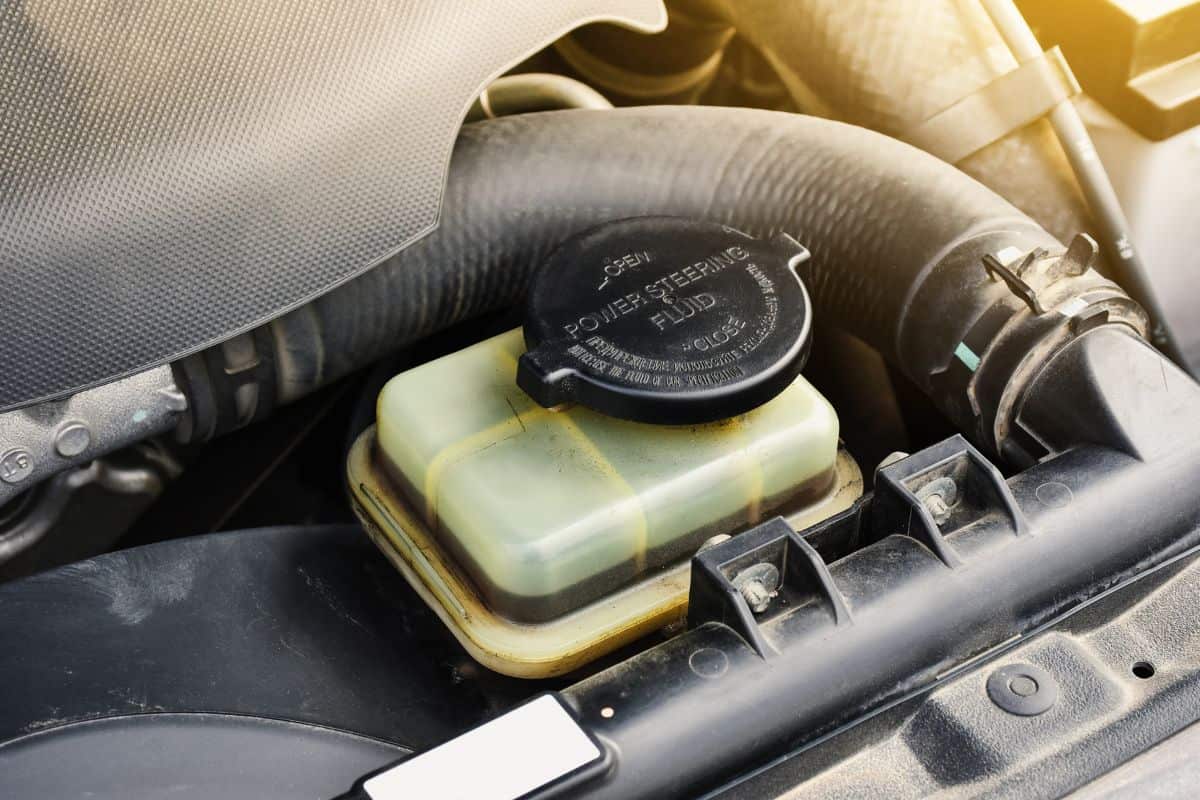
Below are a few quick fixes for for overfilled hydraulic fluid:
Clean Up The Spill
If you spill something or fill something up when working on the car, you can end up with a mess. In any case, before it becomes too hot, you should wipe away any oil that has spilled within the engine compartment.
This is the simplest thing to do in this situation. Wipe out the entire bay with an absorbent cloth or sponge to absorb the spilled fluid.
Click here to see these absorbent cloths on Amazon.
Change The Reservoir
The reservoir serves as a venue to drain the extra fluid before it runs all over the engine area. However, it is still highly recommended to keep fluids at the proper levels at all times when working on your car.
You can think about switching to higher-quality reservoirs. With the development of transportation engineering technology, universal aluminum power steering reservoirs have become more prevalent.
Click here to see this power steering reservoir on Amazon.
This reservoir meets or surpasses exact original equipment manufacturer (OEM) specifications. It aids in pressure relief, preventing leaks of hydraulic fluid.
Plus it replaces the basic reservoir with a much more robust and more attractive version. As a result, it is clear how greatly high-quality produced items have influenced the advancement of automotive technology.
Use A Turkey Baster
A turkey baster is a kind of syringe that can assist you in removing excess liquid if necessary. Although it is a time-consuming process, it is regarded as one of the better methods when compared to certain other pricey ways.
If you don't want to waste any extra fluid after removing it, you can put it in a container to keep it from splashing out and contaminating the engine area.
You can also use the turkey baster when changing old fluid for new. Remove the old fluid with the baster, add the new fluid, and you are done.
The oil in the tank, not the entire amount of power steering fluid in the system, can only be absorbed when the fluid is sucked out in this manner. Consequently, a few additional actions are necessary.
To mix the new fluid with the old oil, add a little new fluid to the tank after the first suction, then drive for roughly 15-20 minutes. After that, use a turkey baster to remove all of the oil. Continue adding new oil after that, drive the vehicle, and let the fluid suck out.
A part of the video below will give you an idea of how to use the turkey baster.
Flush The Hydraulic Or Power Steering Fluid
You can complete the step with ease if the car is jacked up. However, this approach will be a little more challenging than using a syringe. To perform this flushing process correctly, below are the steps. You should check your car’s manual before proceeding.
1. Lift the car using a jack, making sure the front wheels are raised high enough for you to slide underneath the car with ease.
Click here to see this car jack on Amazon.
2. Find the catch tray underneath the power steering system and remove it.
3. Remove the low-pressure pipe from the steering pump's lowest point to drain the hydraulic fluid.
4. Remove the reservoir's cap, then fill it with about half of the recommended amount of hydraulic fluid, according to the manufacturer.
5. Start the vehicle and keep the fluid reservoir halfway full as you add more.
6. After you shut off the engine, reattach the power steering line.
7. Close the reservoir after filling it to the recommended level.
8. For five minutes, turn the steering wheel from one locked position to the other while starting the engine.
9. Turn off the engine and add more fluid to the reservoir.
10. Check the steering wheel to make sure it's functioning properly when the weight of the car is on the tires.
For more details on this process, watch the video below.
Use A Small Funnel
Refilling or filling the hydraulic fluid carefully and cautiously is a practical way to avoid spilling or damaging the engine compartment. You can do this with a small funnel.
The entrance to the reservoirs is typically quite small. Without a funnel, you run the danger of spilling some of the hydraulic fluid within the engine bay of your car.
What's The Right Amount Of Hydraulic Fluid?
The reservoir for the power steering fluid is either made of metal or translucent plastic. The metal reservoir's opening or lid features a dipstick that reads "FULL and LOW" to indicate the fluid level. With this reservoir, the fluid level should be close to or slightly below the "FULL" indication.
On the other hand, the outer body of the transparent plastic reservoir has the 'LOW and FULL' marking that allows you to verify the fluid level without opening it. Make sure the fluid level is constantly on the "FULL" mark.
How To Choose The Appropriate Hydraulic Fluid
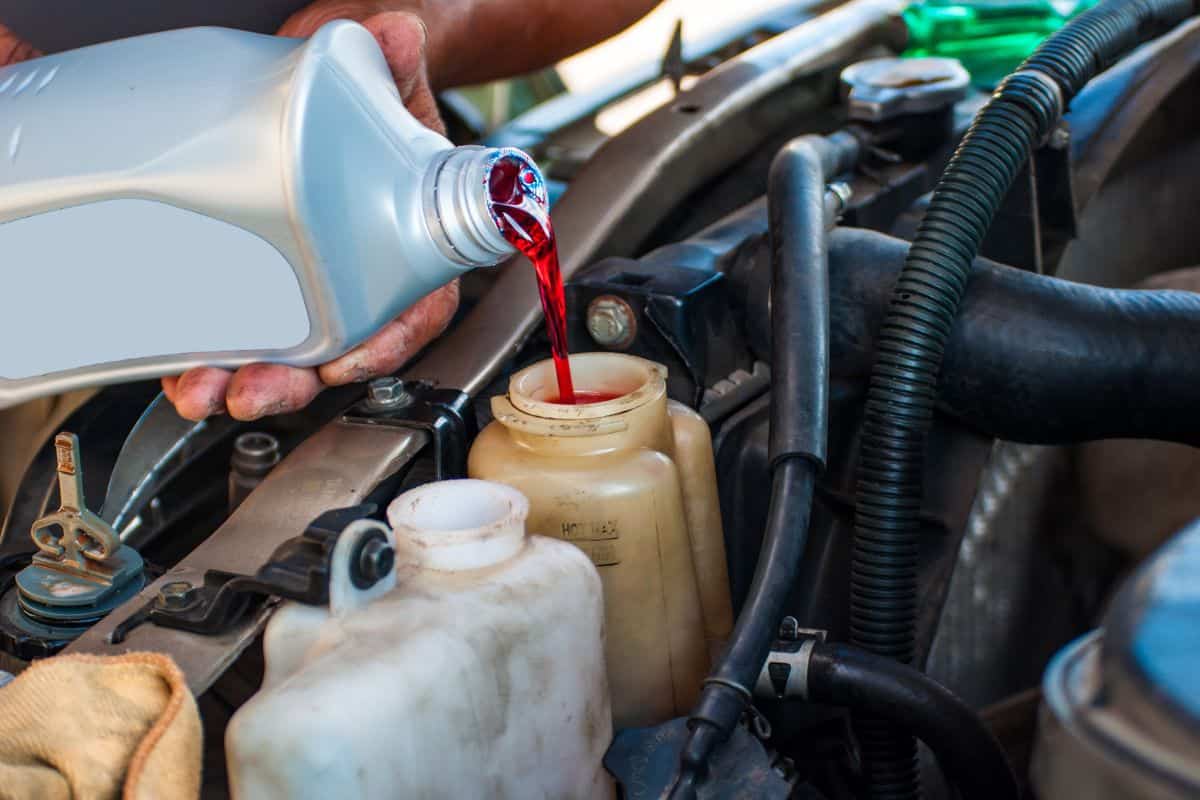
The hydraulic systems of your car are among its most crucial parts. A car cannot operate effectively without properly functioning hydraulic systems.
Moreover, understanding each fluid's characteristics is necessary to select the appropriate hydraulic fluid. There are numerous lubrication options available for the majority of lubricated equipment.
It doesn't necessarily follow that an item is the best choice for the application just because a machine continues to function on it.
Most poorly specified lubricants don't immediate problems. Instead, they shorten the typical lifespan of lubricated components and, as a result, go unnoticed.
There are two fundamental considerations in hydraulics: the type of hydraulic oil and the degree of viscosity. Knowing the sort of hydraulic pump used in the structure, as well as the temperature and pressure at which it operates, can help with these two considerations. But it doesn't end there.
Considerations to be made include base oil type, lubricant quality, and execution characteristics. The working environment, the type of machine, and other elements can all have a significant impact on the framework requirements for these things.
Always seek advice from the equipment's manufacturer or someone who is knowledgeable about the specifications of hydraulic fluid. You can also check the manuals if they're available.
Final Thoughts
Overfilling the fluids in your car is never a smart idea because it might result in serious problems. Although this post focuses on steering power systems, the situation is the same with your brake and suspension systems if they use hydraulic fluid. For more information, refer to your owner's manual.
If you found this post helpful, check out these related posts:



